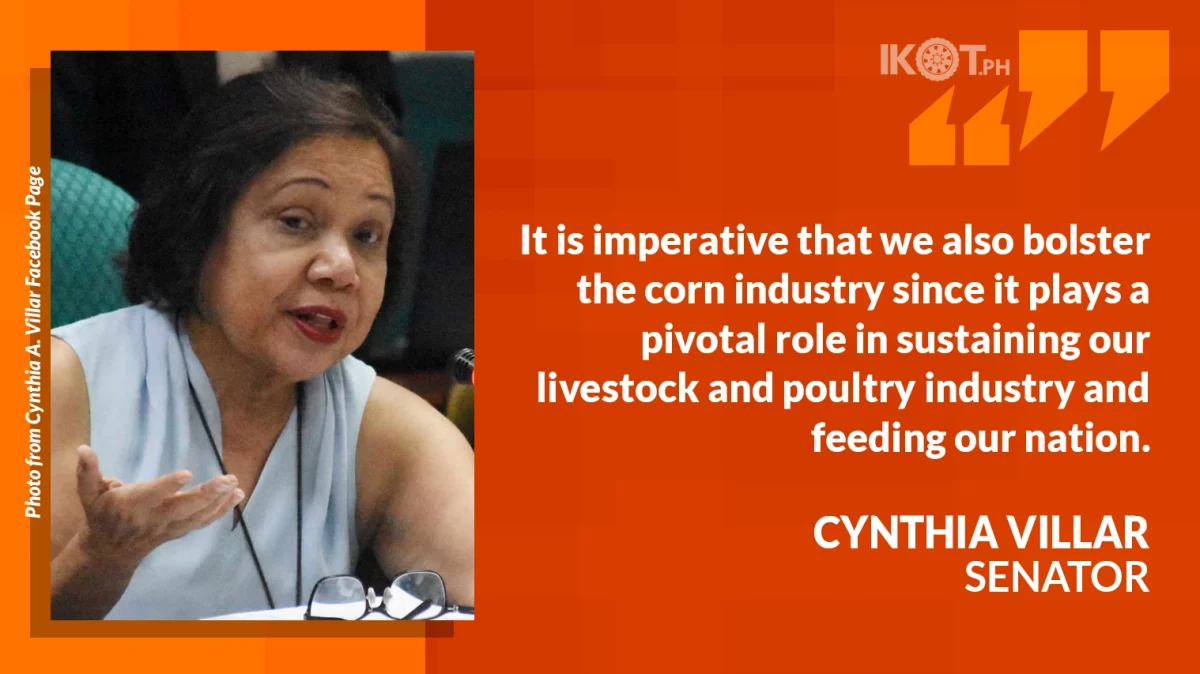To propel the competitiveness and expansion of the corn industry, Senator Cynthia Villar has sponsored Senate Bill No. 2625 under Committee Report No. 246, entitled “An Act to develop the Philippine Corn Industry, enhance the availability and affordable of quality feeds and staple food, and provide for a corn competitiveness enhancement fund”.
“It is a crucial supplementary measure aligned with the objectives of the Livestock, Poultry and Dairy Industry Development Act which I earlier sponsored,” Villar said.
“It is imperative that we also bolster the corn industry since it plays a pivotal role in sustaining our livestock and poultry industry and feeding our nation,” the veteran legislator added.
Livestock feed depends on inputs like corn, wheat, and soya. About 40% to 60% of animal feed consists of yellow corn.
The Philippines has a deficit of about 3 to 5 million metric tons (MT) of corn annually.
In 2023, the combined corn-livestock-poultry sector contributed 27.17% of gross value added in agriculture.
It provided livelihood opportunities to more than 1.28 million corn farmers, 2.8 million livestock and poultry farmers and thousands of other industry players.
The chairperson of the Senate Committee on Food and Agriculture said this underscores the impact of the industry on our economy, particularly on job creation, food security, and potentially on poverty alleviation.
“Yet despite its significance, the yellow corn industry faces its share of challenges that require greater government attention.”
“Yet despite its significance, the yellow corn industry faces its share of challenges that require greater government attention,” the seasoned lawmaker noted.
The lady senator also said the proposed measure provides for the creation of the Corn Competitiveness Enhancement Fund. This is in addition to the annual regular budget.
For 10 years, the Corn Fund shall consist of an annual P3 billion budget, which will come from tariff collection on imported corn, feed wheat, feeds and other products and ingredients for feeds.
“We propose that 80 percent of the Corn Fund shall be utilized for yellow corn, and 20% of the fund to white corn development and other indigenous corn varieties.”
“We propose that 80 percent of the Corn Fund shall be utilized for yellow corn, and 20% of the fund to white corn development and other indigenous corn varieties,” she said.
The fund shall be allocated as follows:
1. Forty percent (40%) for Philippine Center for Postharvest Development and Mechanization in which the 23% shall be for post-production, 15% for mechanization of corn farms and 2% for its Program Management Office:
2. Twenty percent (20%) for the Bureau of Plant Industry in its provision of seeds and fertilizers. The seeds should be produced by local Filipino farmers and registered with the Philippine Seed Board or National Seed Industry Council;
3. Twenty percent (20%) for the establishment and operations of the BPI Corn Unit and the field offices in corn producing provinces;
4. Ten percent (10%) for Agricultural Training Institute of DA for the extension and training activities and
5. Ten percent (10%) for the Bureau of Agricultural Research for corn applied research, and basic research.
According to Villar, even if our yellow corn productivity has increased at an average of 4.2 metric tons per hectare from 2018 to 2022, the Philippines is still lagging behind, ranking 8th among its neighboring countries in Asia.
The Philippines remains a net importer of yellow corn.


